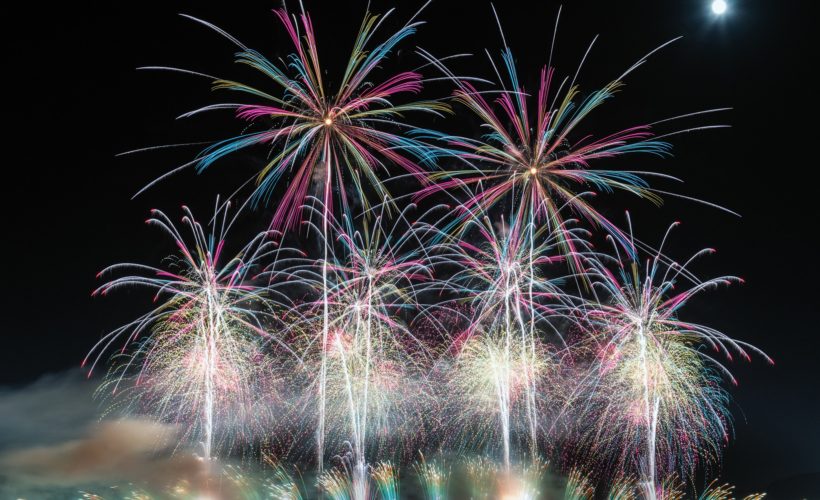The Japanese call fireworks hanabi, meaning “fire flower.” The name suggests not only a physical resemblance, but also an existential one. Fireworks bloom, but only for a moment, dazzling onlookers before fading into oblivion.
Their transience inspires Makoto Igari to document hanabi every summer, when explosions light up the night skies across Japan. “I want to keep them as photographs,” he says.
Local governments throw some 7,000 fire flower festivals—called Hanabi Taikai—each year, mostly in late July and August. Hundreds of thousands of people attend, wearing traditional summer kimonos called yukatas and sandals made of wood or bamboo. The crowds oooh and aaah, shouting the names of historic pyrotechnic guilds like Kagiya and Tamaya to express their appreciation.
The tradition dates back to the Edo period, well before Americans began commemorating independence by blowing stuff up. In 1733, the ruling shogun placated his people by supplying gunpowder for a show above the Sumida River in modern Tokyo. Within a century, legendary fireworks factories like Kagiya and Tamaya began competing for the crowds’ affections, a spirit of rivalry that lives on at events like the All Japan Fireworks Competition, where famed pyrotechnicians like Keiji Hosoya and Yoichi Nomura face off.
With such a history, it’s no wonder Japan produces some of the most exquisite fireworks in the world. Traditional warimono fireworks explode as perfect spheres, due to their careful construction. Craftsmen pack round shells with explosive shots called “stars,” arranging them in concentric circles around a bursting charge. Some 2,000 feet in the air, the stars scatter in all directions, lighting up in unison and molting colors as they expand into elaborate, tripped-out chrysanthemums, peonies, and weeping willows.
They’re symbols of impermanence—a pervasive theme in Japanese art, according to Japan scholars Damien Liu-Brennan and Mio Bryce. “This accords with essential Japanese aesthetic principles, encompassing a reverence towards nature, the melancholic appreciation of ephemeral beauty, and the need for an embracement of life in its entirety,” they wrote in a 2010 paper published in The International Journal of the Arts in Society.
Igari, an ardent fireworks follower based in Ibaraki Prefecture, attends up to 10 fireworks shows each summer, driven by his quest to preserve the pyrotechnical displays. He fits his Pentax K-1 with a neutral density filter to prevent overexposure and shoots from a half-mile away, triggering 5-second exposures with a remote release. The trick, he says, is to capture the fireworks straight on, so that the sparks fill the center of the frame.
His photographs are a striking tribute to hanabi, capturing exploding bouquets of pyrotechnic blossoms before they wither away.
More Great WIRED Stories
- The reason you use closed captions for everything now
- The stock market loophole that screws the little guy
- Inside Palmer Luckey’s bid to build a border wall
- The bike share war is shaking up Seattle like nowhere else
- Here are the best Mac alternatives for Windows users
- Looking for more? Sign up for our daily newsletter and never miss our latest and greatest stories
Source:WIRED











